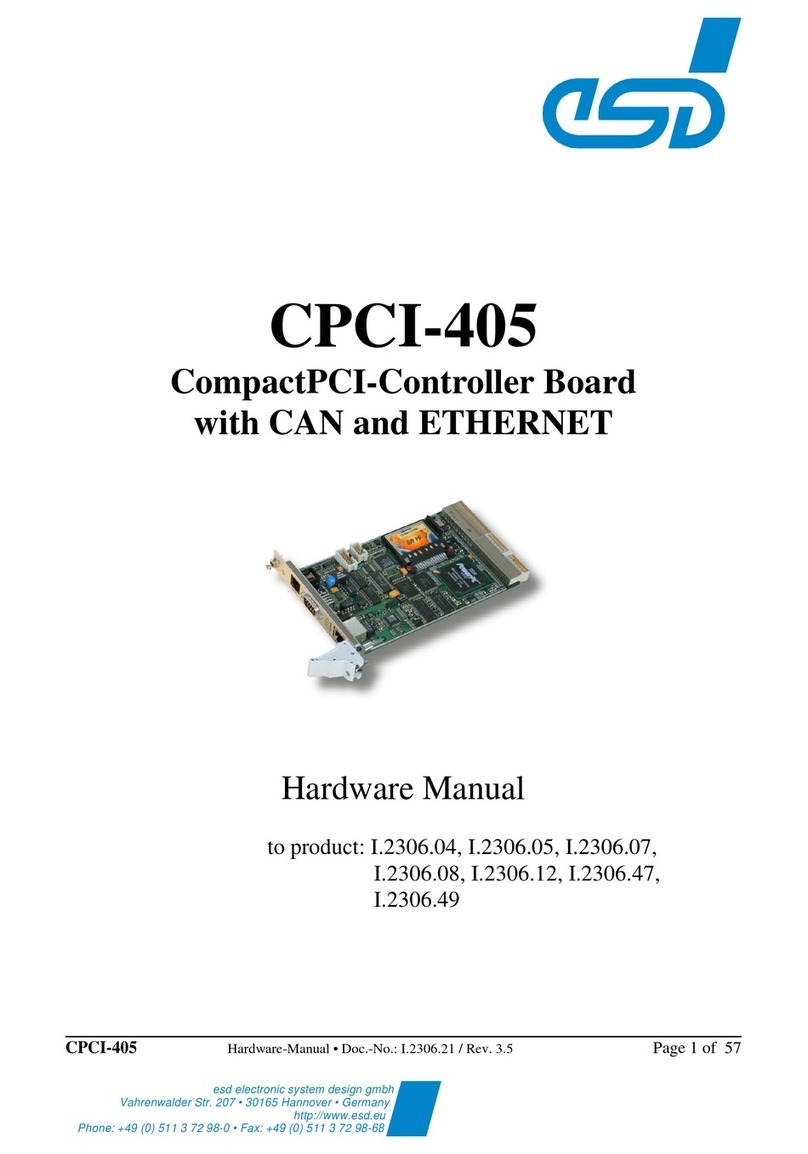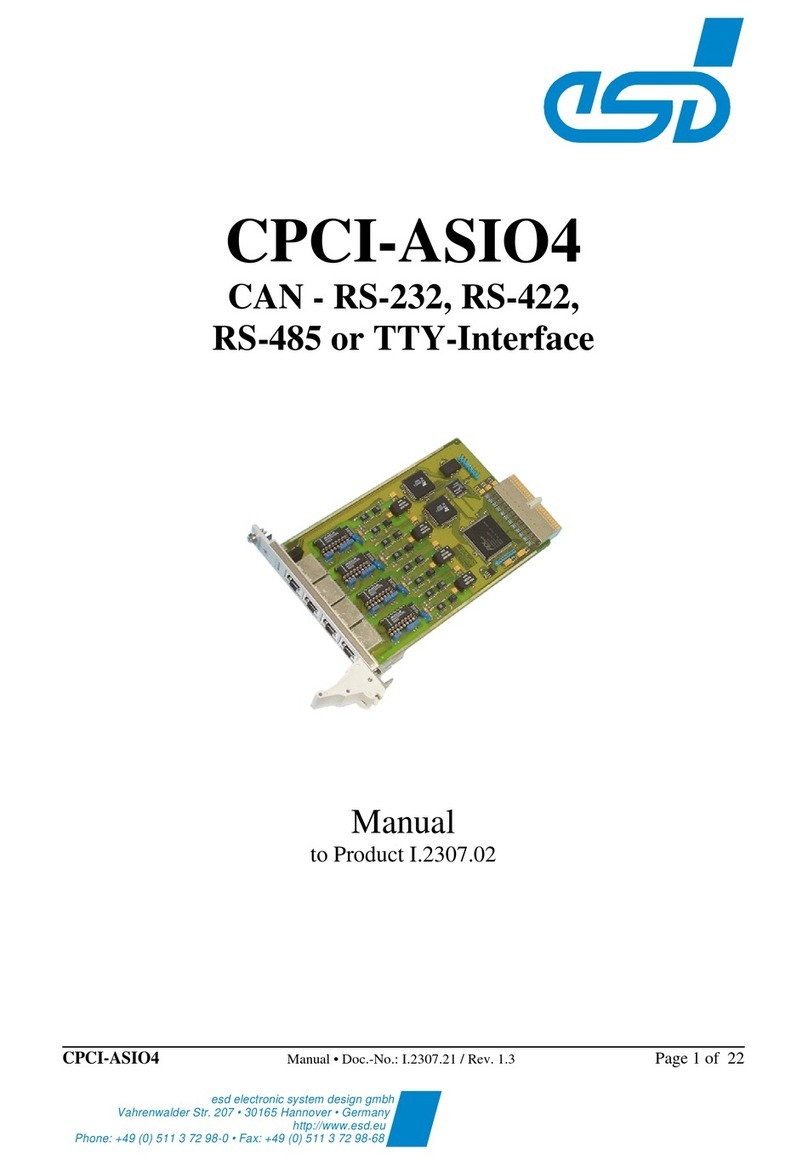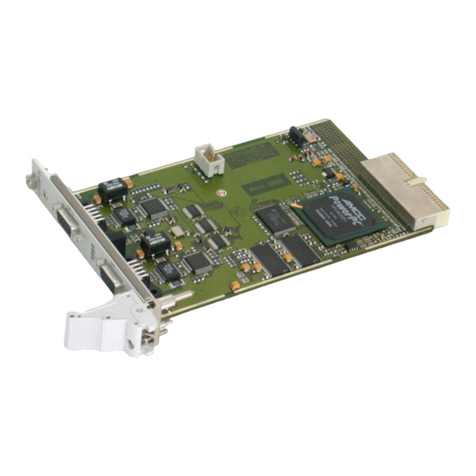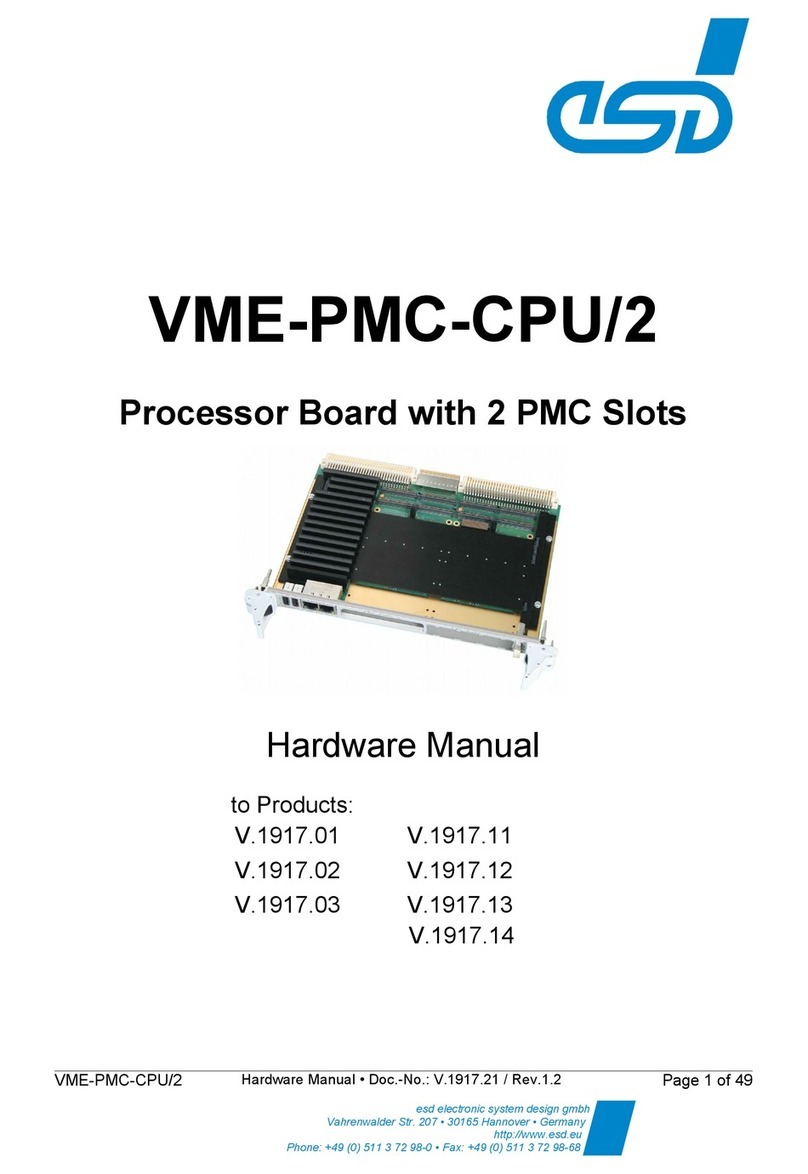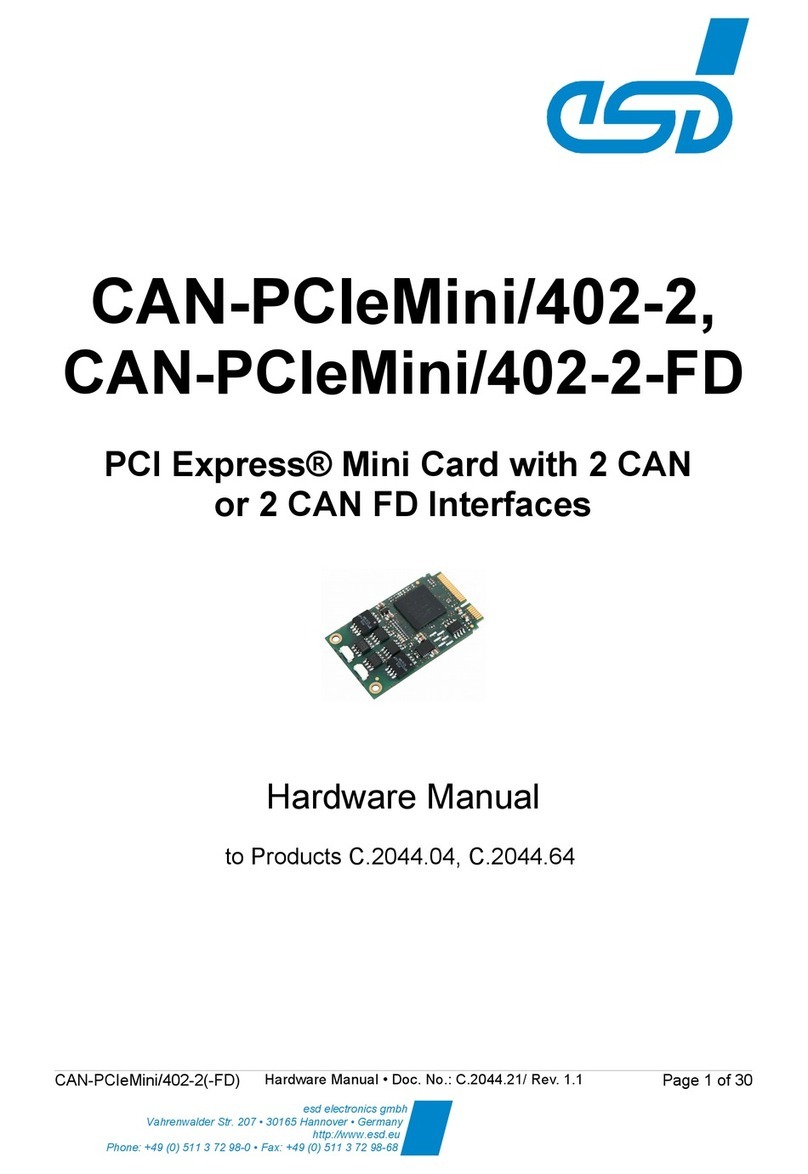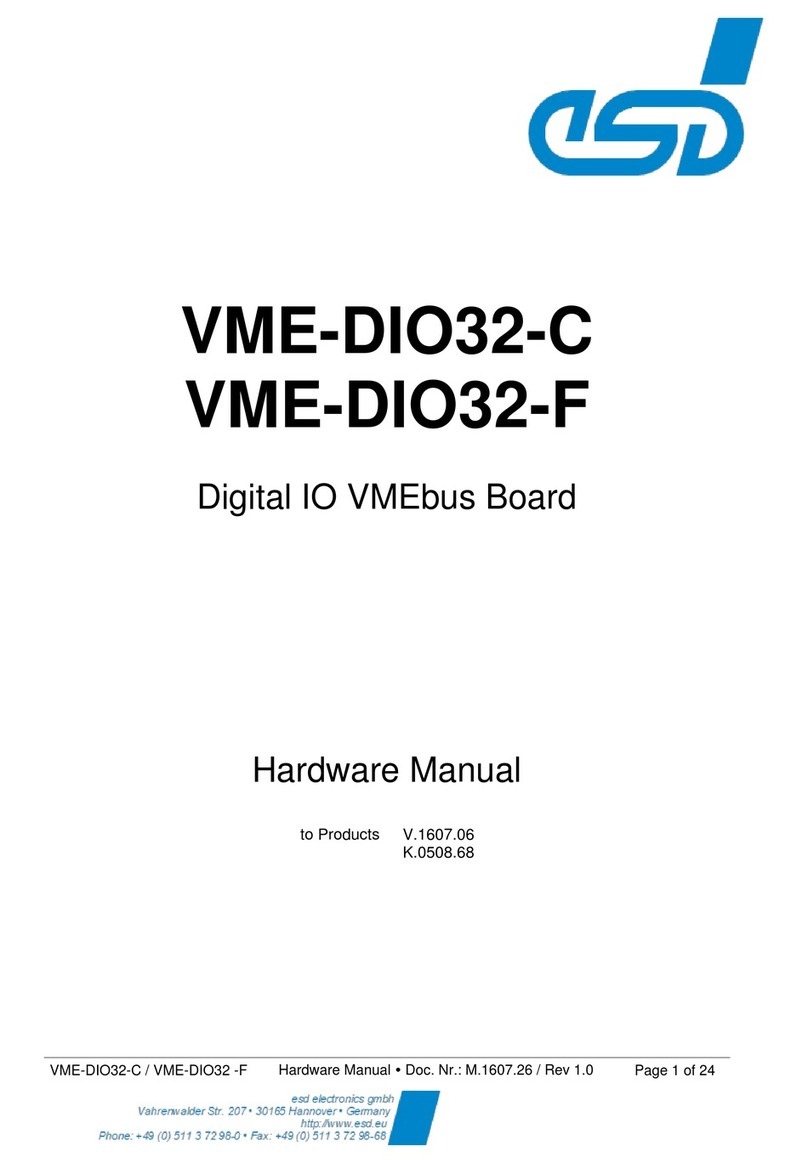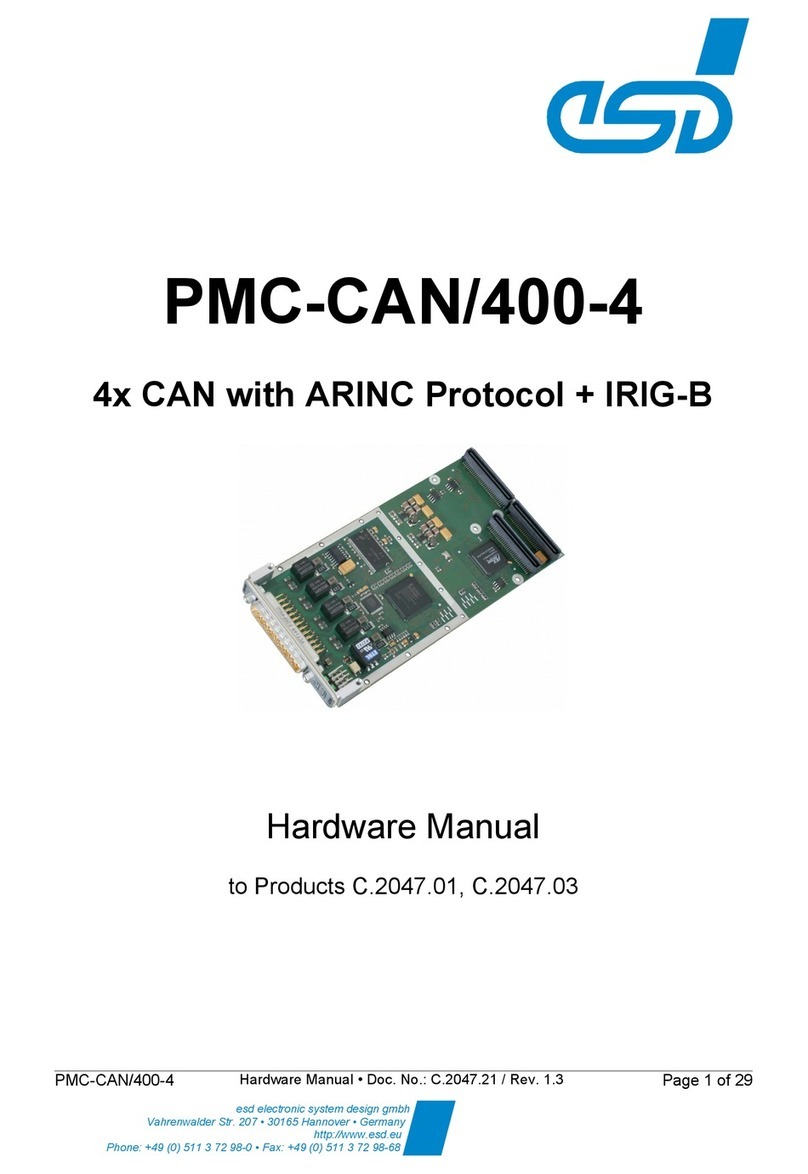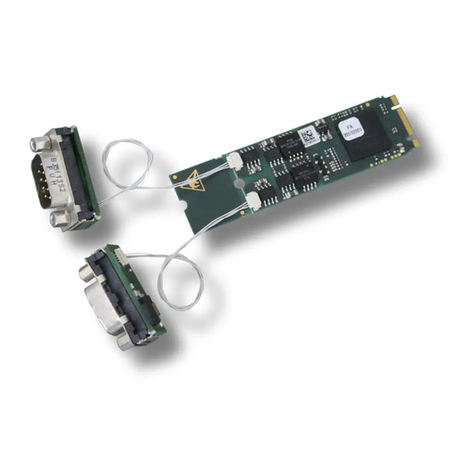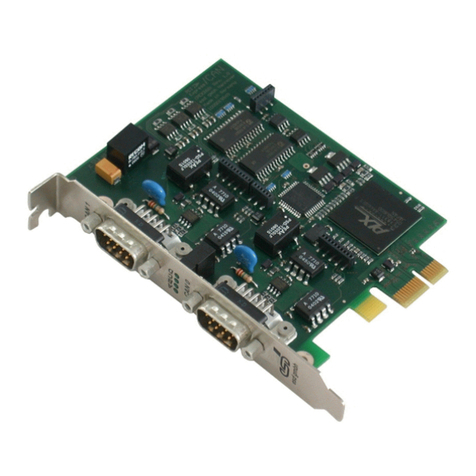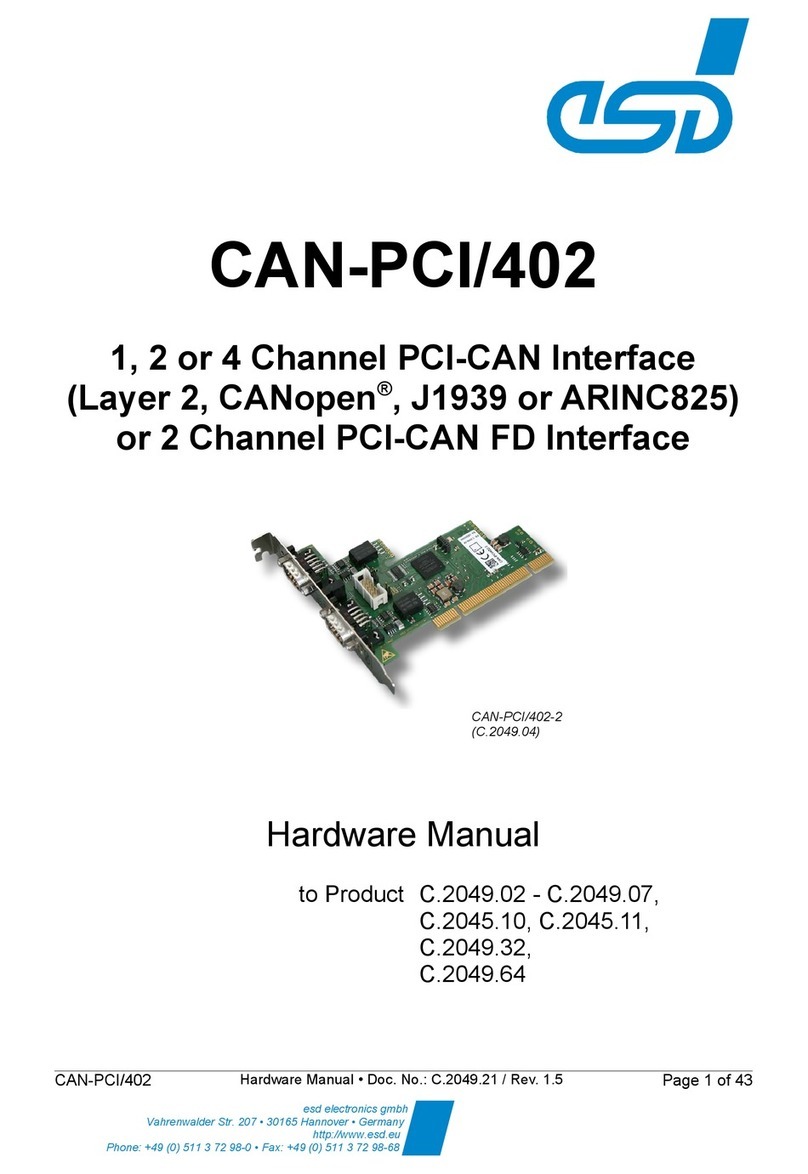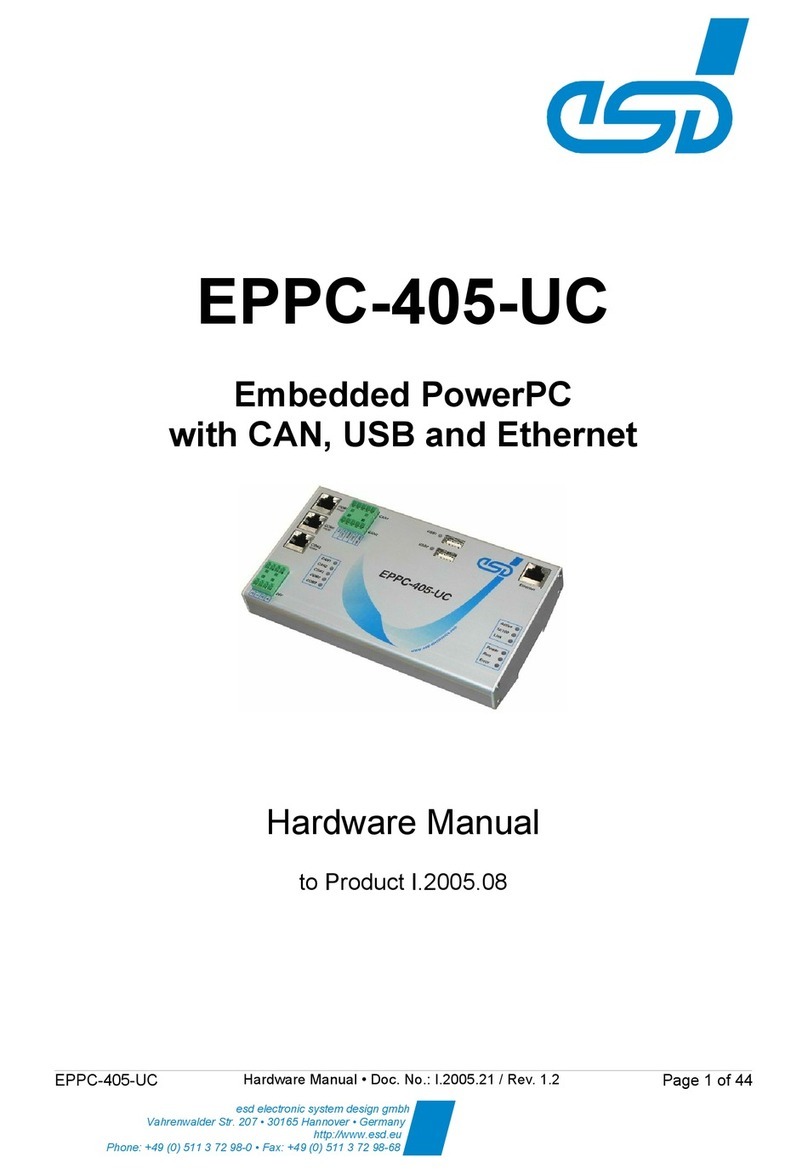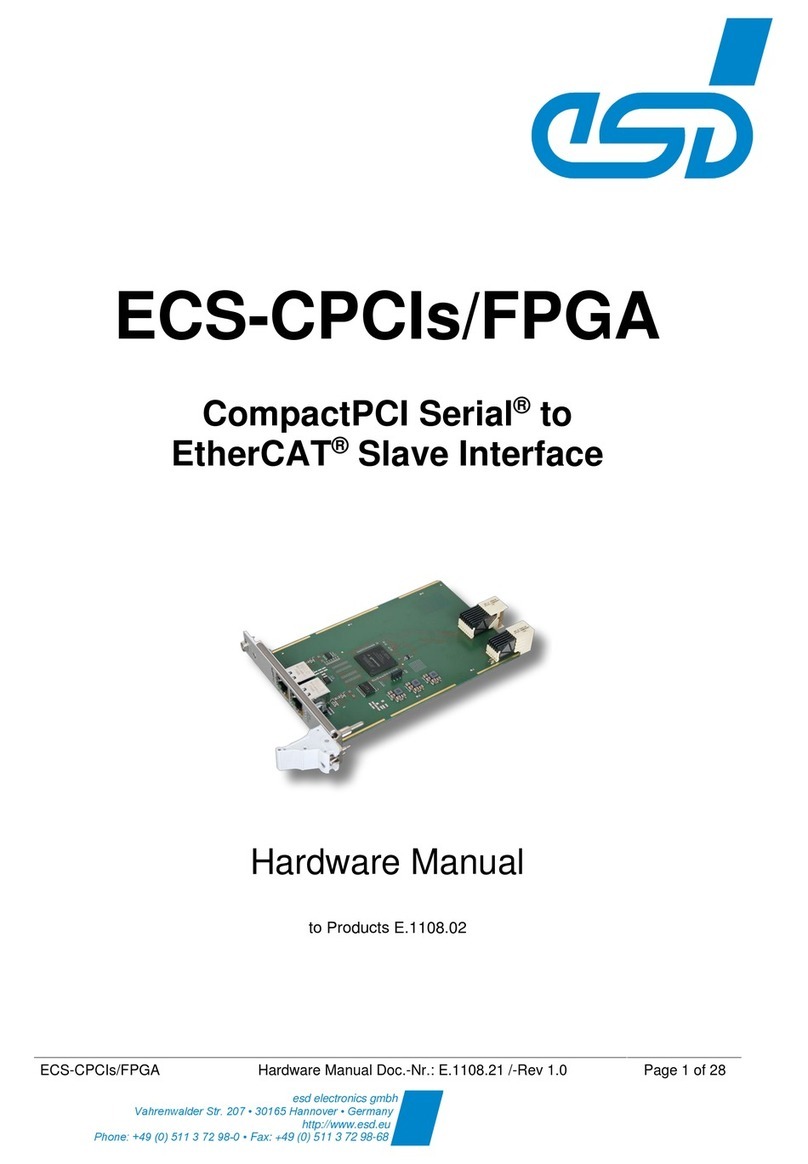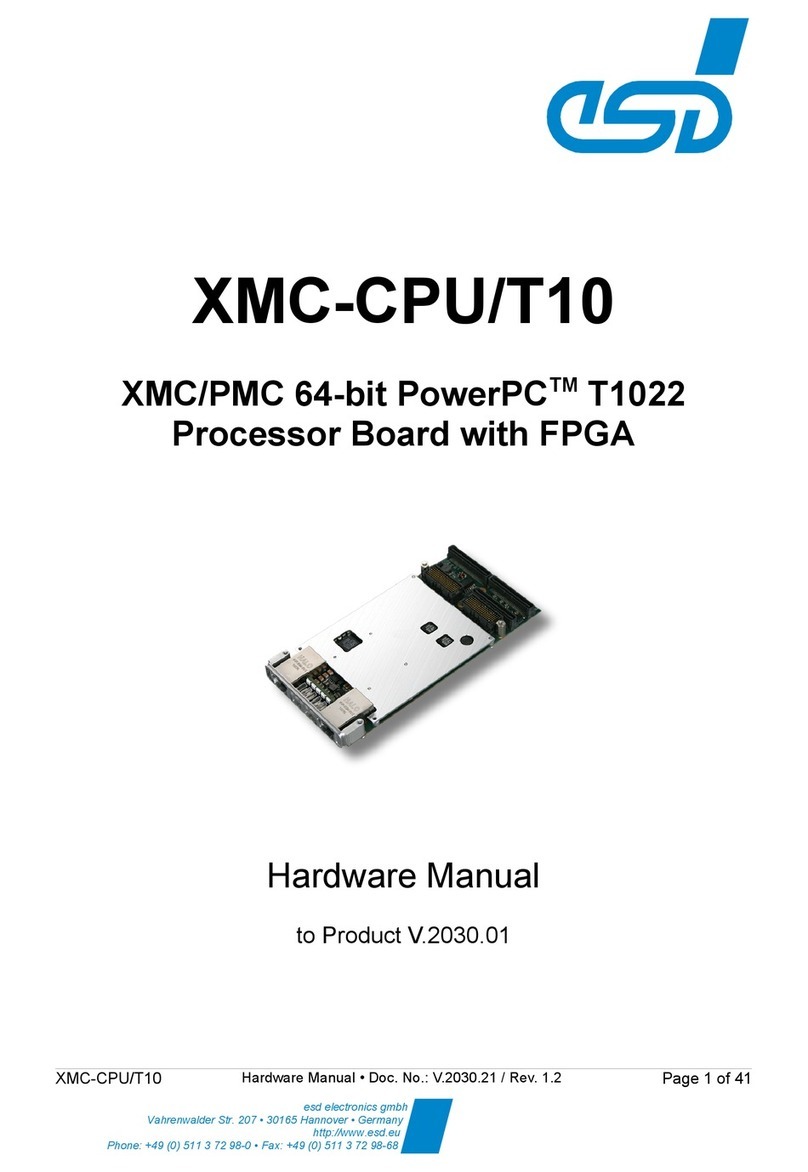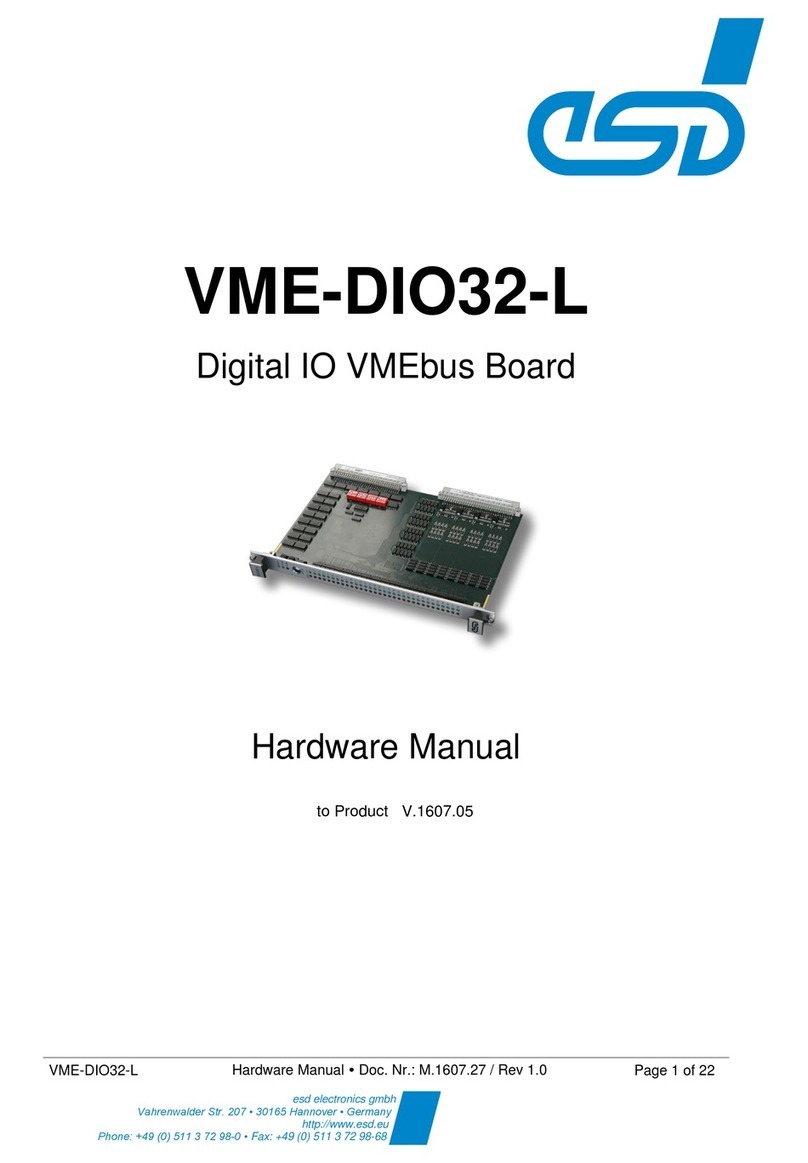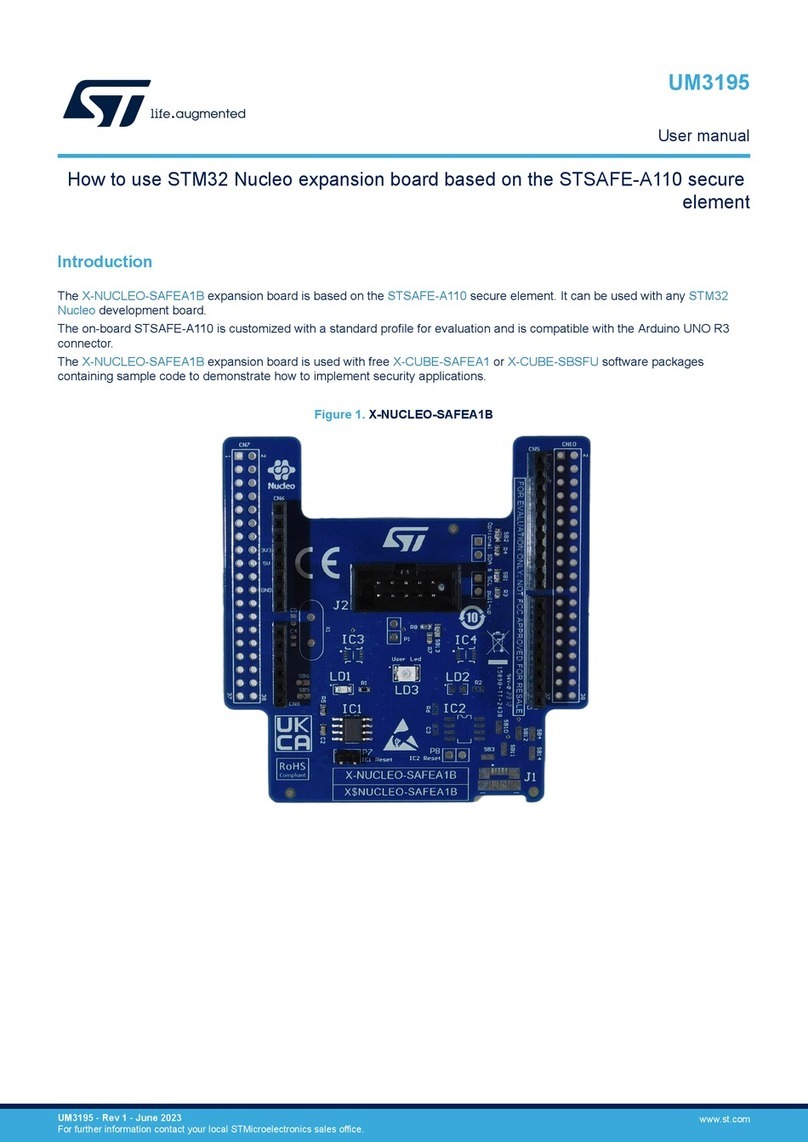PMC-CPU/440
Status: released
Contents
1 Overview........................................................................................................................................... 8
1.1 Description Of The PMC CPU/440 Module...............................................................................8
1.2 Technical Data..........................................................................................................................9
1.2.1 General..............................................................................................................................9
1.2.2 CPU Core..........................................................................................................................9
1.2.3 Realtime Clock (RTC)........................................................................................................9
1.2.4 PCI Interface.................................................................................................................... 10
1.2.5 Serial Interfaces............................................................................................................... 10
1.2.6 CAN Interfaces.................................................................................................................10
1.2.7 Ethernet Interfaces...........................................................................................................11
1.2.8 USB Interface (Host or Device)........................................................................................11
2 Installation Instructions....................................................................................................................11
3 Front Panel..................................................................................................................................... 11
4 Top and Bottom Side......................................................................................................................12
5 JTAG Debug Interface....................................................................................................................14
5.1 JTAG Chain Description..........................................................................................................14
5.2 JTAG Connector (X5)..............................................................................................................14
6 PMC Connectors............................................................................................................................. 16
6.1 PMC P1 Connector.................................................................................................................. 16
6.2 PMC P2 Connector.................................................................................................................. 17
6.3 PMC P4 I/O Connector............................................................................................................18
6.3.1 Pinout............................................................................................................................... 18
6.3.2 Signal Description............................................................................................................19
7 Local Memory Map......................................................................................................................... 20
8 Interrupts......................................................................................................................................... 22
8.1 External Interrupt Assignment.................................................................................................22
8.2 PCI Interrupt Handling.............................................................................................................22
8.2.1 Monarch Mode.................................................................................................................22
8.2.2 Asserting PCI Interrupts In Non monarch Mode...............................................................22
8.2.3 Asserting Local Interrupts From PCI Bus.........................................................................22
9 PCI Configuration............................................................................................................................ 22
10 Bootloader.....................................................................................................................................23
10.1 License.................................................................................................................................. 23
10.2 Configuration and Console Access........................................................................................23
10.3 Default Bootloader Environment............................................................................................24
10.4 Flash Update......................................................................................................................... 25
10.5 BSP Commands....................................................................................................................26
10.5.1 irigb Get / Set IRIG B time...........................................................................................26
10.5.2 inta – Assert / Deassert PCI interrupt line on PMC440...................................................26
10.5.3 sbe – configure CPU strapping......................................................................................27
10.5.4 fifo – Control Hardware FIFO Module............................................................................27
10.5.5 loadpci – Start PCI firmware loading..............................................................................28
10.5.6 fpga command...............................................................................................................29
10.5.7 painit Command............................................................................................................. 30
10.5.8 USB............................................................................................................................... 30
10.5.9 resetout Command........................................................................................................30
10.6 Special Environment Variables..............................................................................................31
10.6.1 pcidelay Variable............................................................................................................31
10.6.2 ptm1la, ptm1ms, ptm2la and ptm2ms Variables............................................................31
10.6.3 pram Variable.................................................................................................................31
User Manual V.2027.21
Filename: PMC
CPU440_Manual_en_13.odt
Revision 1.3
2012 06 11
All rights reserved.
Copyright © esd gmbh 2012 Page
6 of 49
